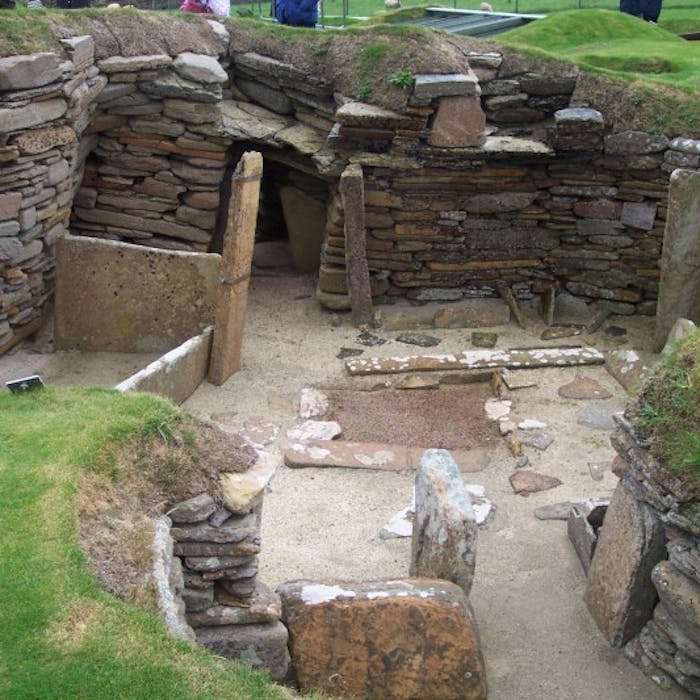
Skara Brae - the Scottish Pompeii
Skara Brae is a stone-built Neolithic village on Orkney's main island, and a much-visited ancient site, regarded by many as one of the most remarkable prehistoric monuments in Europe. It was accidentally revealed after being buried for 5,000 years.
Skara Brae is located on the west coast of Mainland, the largest island in the Orkney archipelago off the northern tip of Scotland.
It was originally an inland village beside a freshwater loch. In the winter of 1850, a great storm battered Orkney. The combination of wind and extremely high tides stripped the grass from a large mound, then known as "Skerrabra", revealing the outline of a number of stone buildings. Intrigued, the local laird, William Watt of Skaill, excavated part of the site, unearthing four ancient houses.
In 1925, another storm revealed even more of the settlement. It now consists of eight dwellings, linked together by a series of low, covered passages, with both the buildings, and their contents, incredibly well-preserved.
All of the houses were well built of flat stone slabs, and set into large mounds of midden linked by the covered passageways. Each house has a single room, its floor space roughly 40sq m. ‘Fitted’ stone furniture in each room includes: a ‘dresser’ – perhaps to store and display special objects; two box-beds; a central hearth; small tanks set into the floor – possibly for preparing fish bait.
A larger structure at one end of the village has a special hearth and no box-beds, so may have been a workshop.
Skara Brae was occupied from roughly 3180 BC to about 2500 BC, and is older than Stonehenge and the Great Pyramids. It has been called the "Scottish Pompeii" because of its excellent preservation, and the fact that it was buried.
Skara Brae became part of the UNESCO World Heritage Site known as the Heart of Neolithic Orkney in 1999, in recognition of the site’s profound importance on an island which has a number of other really significant ancient structures.
A rich array of artefacts and natural remains include gaming dice, tools, pottery, jewellery – necklaces, beads, pendants and pins and richly carved stone objects, perhaps used in religious rituals. The villagers were farmers, hunters and fishermen who were able to produce beautiful and complex items using basic tools.
Most artefacts found are on display in the Skara Brae visitor centre, and nearby is Skaill House. Orkney's finest mansion, built in the 1620s, and the home of the man who discovered Skara Brae, which you can also visit.
Further reading
Links to external websites are not maintained by Bite Sized Britain. They are provided to give users access to additional information. Bite Sized Britain is not responsible for the content of these external websites.
